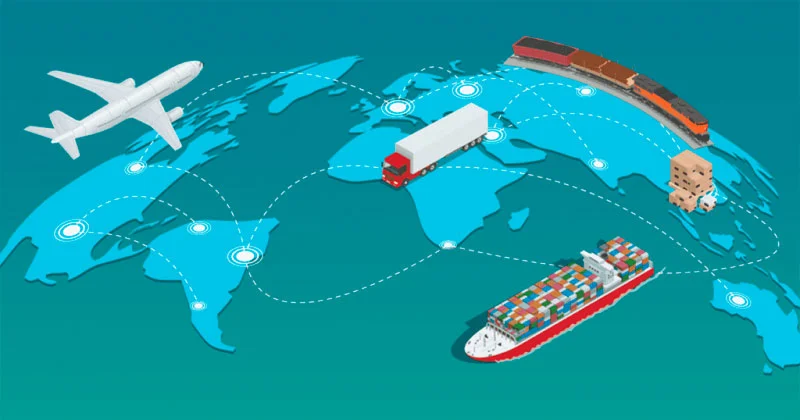There are two other strategies by which we will get a good point for our model, that are the resampling technique to estimate model accuracy and validation dataset. When you are working it in manufacturing, that is (ideally) going to be similar to the take a look at set. It’s not going to be knowledge you’ve ai networking seen earlier than, so the coaching set efficiency doesn’t matter a lot. A straight line is not susceptible to overfitting, very prone to underfitting.

Understanding why they emerge in the first place and taking action to prevent them might increase your model efficiency on many levels. Let’s better explore the distinction between overfitting and underfitting via a hypothetical example. When the mannequin neither learns from the coaching dataset nor generalizes nicely on the take a look at dataset, it is termed as underfitting. This sort of downside is not a headache as this can be very easily detected by the efficiency metrics. If the efficiency isn’t good to attempt other fashions and you will certainly get good outcomes.
For this instance, we are going to create our personal simple dataset with x-values (features) and y-values (labels). An essential part of our knowledge era is adding random noise to the labels. In any real-world process, whether or not natural or man-made, the information doesn’t exactly match to a pattern. There is at all times noise or different variables within the relationship we can not measure.
Overfitting is when an ML mannequin captures too much detail from the information, leading to poor generalisation. It will exhibit good efficiency throughout training however poor performance throughout testing. Supervised fashions are educated on a dataset, which teaches them this mapping perform. Ideally, a mannequin ought to be able to find underlying developments in new knowledge, as it does with the coaching data. The answers thus far are cheap within the context of linear regression. But in a deep-learning context we normally practice to the point of overfitting (if we have the resources to); then we go back and use the model saved most recently before that.
Complex fashions with robust regularization usually carry out higher than initially simple models, so this could be a very highly effective software. Underfitting signifies that your mannequin makes correct, however initially incorrect predictions. In this case, practice error is giant and val/test error is massive too.
3) Eliminate noise from information – Another reason for underfitting is the existence of outliers and incorrect values in the dataset. In order to find a stability between underfitting and overfitting (the greatest mannequin possible), you want to find a mannequin which minimizes the entire error. It gave an ideal rating over the coaching set but struggled with the test set.
In This Weblog, You’ll Get An Instinct Behind Using Cross-entropy And Log-loss In Machine Learning
Google One-Tap login adds this g_state cookie to set the consumer standing on how they work together with the One-Tap modal. Explore practical solutions, advanced retrieval methods, and agentic RAG systems to improve context, relevance, and accuracy in AI-driven functions. Moreover, it could be fairly daunting once we are unable to search out the underlying cause why our predictive mannequin is exhibiting this anomalous conduct. Join our world-class panel of engineers, researchers, product leaders and more as they minimize by way of the AI noise to deliver you the newest in AI information and insights. In the context of laptop vision, getting extra data can even imply _data augmentation_.
The normal deviation of cross validation accuracies is low compared to overfit and good fit model. Finally, you can cease the coaching process earlier than a model turns into too centered on minor particulars or noise within the training data. Achieving this requires cautious monitoring and adjustment to get the timing just right. If halted prematurely, the mannequin will fail to capture both the core patterns and the nuances of the data (underfitting).
That’s why it is so important – hours of analysis can save you days and weeks of labor. Before we transfer on to the instruments, let’s perceive the method to “diagnose” underfitting and overfitting. Overfitting models are like college students who memorize answers as a substitute of understanding the subject. They do well in follow exams (training) however wrestle in actual exams (testing). This is the place the mannequin performs properly on each training knowledge and new information not seen during the coaching process. The mannequin with a great match is between the underfitted and overfitted mannequin, and ideally, it makes predictions with 0 errors, but in apply, it’s troublesome to realize it.
Overfitting might occur when coaching algorithms on datasets that comprise outliers, noise and other random fluctuations. This causes the model to overfit tendencies to the training dataset, which produces high accuracy in the course of the training section (90%+) and low accuracy in the course of the check section (can drop to as little as https://www.globalcloudteam.com/ 25% or under). Like in underfitting, the mannequin fails to determine the precise pattern of the dataset. Consider a non-linear regression model, corresponding to a neural network or polynomial model. A maximally underfitted resolution may fully ignore the coaching set and have a continuing output whatever the enter variables. In this case the anticipated mean squared error on test data shall be approximately the variance of the response variable in the coaching set.
- Generally, people use K-fold cross-validation to do hyperparameter tuning.
- To make a model, we first want data that has an underlying relationship.
- This may appear to be a good suggestion — don’t we want to be taught from the data?
- It happens when a model is simply too simple to seize what’s going on in the knowledge.
Overfitting, on the opposite hand, occurs when a model is simply too advanced and memorizes the training knowledge too well. This results in good performance on the training set but poor efficiency on the test set. An underfit model performs poorly on coaching knowledge and testing information as a end result of it fails to seize the dominant patterns in the data set. Engineers sometimes establish underfitting via constantly poor efficiency across each information sets.

Their model seems nice, however the issue is they by no means even used a testing set let alone a validation set! The model is nothing more than an overfit illustration of the training knowledge, a lesson the student soon learns when another person tries to apply their model to new data. For our downside, we will use cross-validation to pick out the most effective model by creating models with a variety of different levels, and consider every one using 5-fold cross-validation. The model with the bottom cross-validation score will perform best on the testing data and will obtain a steadiness between underfitting and overfitting. I select to make use of models with levels from 1 to 40 to cover a extensive range.
Why Getting More Knowledge Generally Can’t Help
As in the above diagram of overfitting, you probably can see the decision boundary is non-linear. This sort of choice boundary is generated by non-linear models similar to decision bushes. Underfitting happens when a model is simply too simplistic to understand the underlying patterns in the data. It lacks the complexity needed to adequately represent the relationships current, resulting in poor efficiency on each the coaching and new information.
Every Little Thing You Have To Learn About Classification In Machine Learning
By studying inductively from training, the algorithm ought to be in a position to map inputs to outputs when subject to real knowledge with a lot of the same options. In the case of underfitting, the mannequin just isn’t in a position to be taught enough from the training information, and therefore it reduces the accuracy and produces unreliable predictions. Overfitting and Underfitting are the 2 major problems underfit vs overfit that occur in machine studying and degrade the efficiency of the machine learning fashions. To reveal that this model is susceptible to overfitting, let’s have a look at the next example.
To examine fashions, we compute the mean-squared error, the average distance between the prediction and the true value squared. The following desk reveals the cross validation results ordered by lowest error and the graph exhibits all the outcomes with error on the y-axis. Opposite, overfitting is a situation when your model is just too advanced for your knowledge. More formally, your hypothesis about information distribution is mistaken and too complex – for instance, your data is linear and your model is a high-degree polynomial. This means that your algorithm can’t make accurate predictions – altering the input data solely slightly, the mannequin output changes very much.